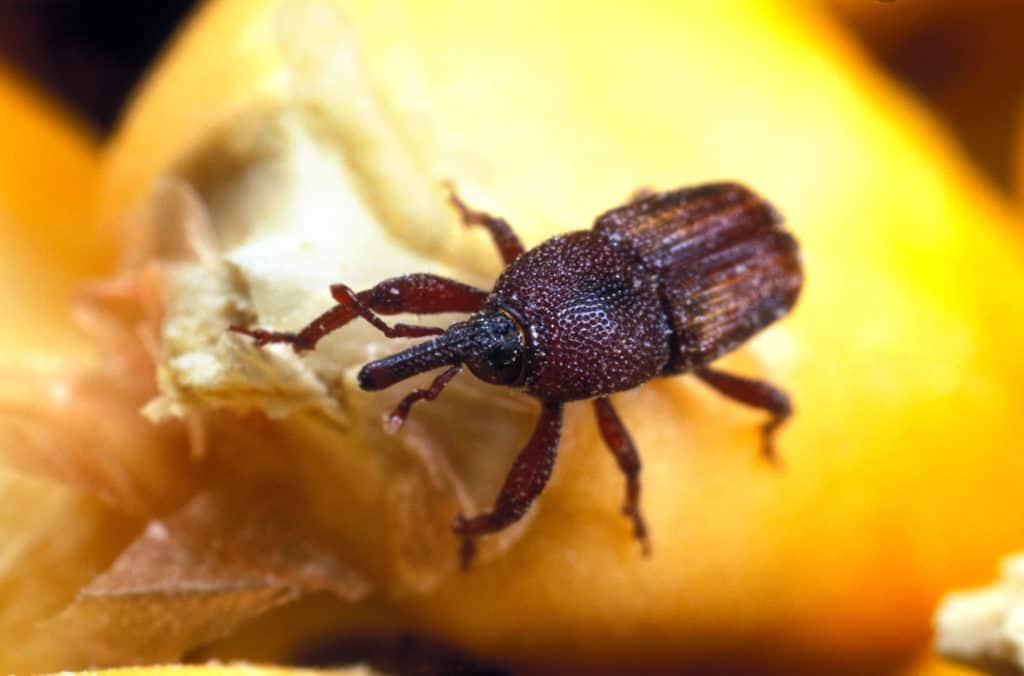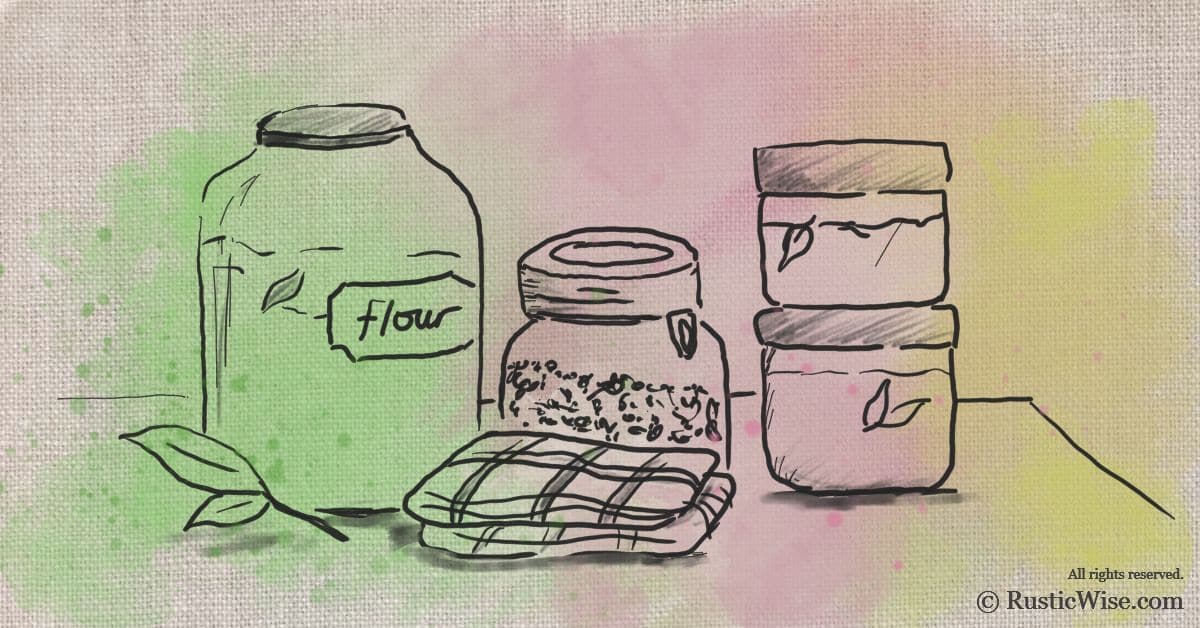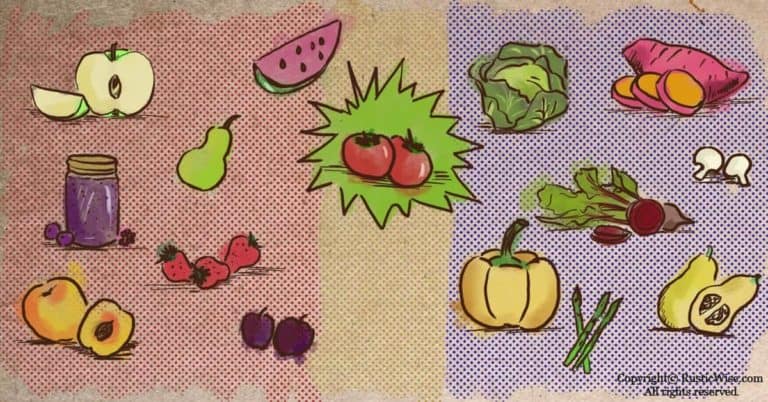How Do You Get Rid of Weevils Naturally: 5 Steps and 5 Natural Solutions
You might have found tiny bugs in flour, rice, pasta, cereal or other grain products. These bugs are most likely weevils, a small type of beetle. While there are thousands of species of weevils, the most commonly found ones in pantries are the granary weevil (Sitophilus granarius), also known as the wheat weevil, grain weevil, or flour weevil (as that’s where it’s most often found); and the rice weevil (Sitophilus oryza).
While it’s not unusual, nor should you fret if you find one or two bugs in your pantry, the problem is when you find them all over your pantry. In the cereal, in the rice, crawling around in the flour—this is when there is a problem.
When your shelves are overrun with these pantry pests, there are effective and natural methods of getting rid of weevils. It’s important to take steps to stop more eggs from developing and creating an even larger infestation.
Where do weevils come from?
You might have a spotless and pristine kitchen and pantry, yet still find yourself with a weevil problem. There are a few ways that weevils find their way into your home. The most common way, particularly with granary weevils, is that they are already in your food products when you bring them home.
Say, what?!
While this might be an unsettling thought, it’s true. Granary weevils feast upon stored grains and lay their eggs inside a single grain kernel. As the egg progresses from larva to pupa, it eventually chews its way out of the grain and emerges as a fully formed weevil.
Granary weevils can’t even fly and instead rely on being “carried” from one food source to another, from storage elevator, to packaging plant, and eventually to your home. The eggs are nearly impossible to detect in rice, flour, oats, and other grains.
Rice weevils on the other hand have fully-formed wings and can fly from one place to another. They too, lay eggs inside rice grains.
Other types of garden weevils such as strawberry root weevils come into your home through small cracks in walls, windows, and doors.
Issues with unnatural methods
While it might seem like a good idea to spray chemical pesticides to eliminate weevils, it’s not the best solution. Most pesticides contain harmful chemicals—stuff you don’t really want to be spraying around your food. If you have young children or household pets, please avoid using pesticides.
Thankfully there are natural and effective solutions to clear out pantry pests at the root source of the problem—stored food items.

How to rid your pantry of weevils step-by-step
So, how do you get rid of weevils naturally? Follow this step-by-step process and repeat as necessary to get rid of weevils in your pantry. Weevils be gone!
Step 1: Discard any infested food
While it might seem wasteful to throw out food, it’s best to discard food that’s seriously infested to prevent the further spread of eggs.
Some food you might deem salvageable—use your judgment.
Step 2: Freeze or heat any food that’s salvageable
Weevil eggs and larvae can be killed by freezing or heating to certain temperatures. To err on the side of caution, you might want to also freeze or heat any food that was nearby the infested food items.
Heat grains in the oven at 140 degrees Fahrenheit for 15 to 20 minutes.
Freeze foods such as flour can for four to seven days at 0 degrees.
Step 3: Remove all items from pantry shelves
It’s time to clear out your pantry shelves and inspect all possibly infected food items and discard as needed.
Step 4: Vacuum and clean
Use a cloth with white vinegar in a spray bottle to wipe down all shelves. Vinegar has natural disinfectant properties and is a natural deodorizer. Don’t worry about the smell of vinegar, it will go away. You can try making a slightly diluted vinegar solution with water and a few drops of tea tree, or eucalyptus essential oils.
Make sure to wipe along all cracks and crevices. Use a vacuum to further clean your pantry shelves and flooring.
Step 5: Transfer treated food to airtight containers
Weevils can get through plastic and paper bags so it’s best to transfer all stored food items to sealed airtight containers. Glass mason jars, Tupperware containers with tight-fitting lids, or food-grade buckets should do the trick.
Natural solutions to keep weevils away
How do you get rid of weevils naturally? Sometimes the best solutions can be found in nature. Check out a few natural solutions that might help keep weevils at bay.
- Dried bay leaves. Place a bay leaf or two into each sealed container in your pantry to deter weevils.
- Black peppercorns. Try filling a few small cloth bags with whole black peppercorns and hang or place near your grain food items.
- Whole cloves. There’s something about the smell of cloves that drives weevils away. You can put a few cloves into each sealed pantry container, or place cloves directly onto pantry shelves, or areas where you store grains.
- Sunlight. Weevils are drawn to dark and damp places. Try placing affected food items into direct sunlight for a day or two. The light and heat may drive the weevils away.
- Pheromone traps. Using the natural scent or pheromones of weevils to lure them into a sticky layer or trap, pheromone traps can be helpful if you have a large infestation. While farmers pheromone traps to control outdoor infestations, there are some for indoor use too. Pheromone traps won’t completely rid your home of weevils, but they’ll give you an idea of just how many pests there are in your home. And best of all, they’re safe to use around food!
Be proactive and take preventative measures
After you’ve had a weevil infestation in your home, you’ll want to take preventative steps to avoid future outbreaks. As the old adage goes, an ounce of prevention is worth a pound of cure. Here are a few things you can do:
- Seal cracks in your home. If any outdoor weevils came into your home, you’ll want to inspect your windows, doors, and pantry for any cracks and seal them up.
- Inspect all food packages. At the store, carefully inspect food packages for any holes or rips where insects can enter. Try to purchase food that comes in clear packaging so you can have a better look.
- Buy from the bulk bin section. Flour, grains, cereals, seeds, and pastas are all items you can buy in bulk. When buying bulk, you can get a closer look at the food before purchasing.
- Freeze all new packages of food for four to seven days. Might as well try to kill any eggs and larva as soon you bring new food into your home. Once frozen completely, thaw, and transfer to a sealed container.
- Sweep up any small food crumbs regularly. Make an effort to vacuum or sweep your pantry shelves and floor regularly to avoid attracting pests.
- Store food in a dry and cool place. The best places to store food are places that are dry and cool.
👉 If you like this post, see our Rustic Kitchen section. 🍽️
Would you like more timeless tips via email?
Fun tips to help you live an independent, self-sustaining lifestyle. Opt-out at any time.

References
- Patterson, Lindsay (8 January 2019). “Meet The Granary Weevil, The Pantry Monster Of Our Own Creation“. NPR. Accessed April 2020.
- Iowa State University, Extension and Outreach, Horticulture and Home Pest News, Rice Weevil and Granary Weevil, https://hortnews.extension.iastate.edu/rice-weevil-and-granary-weevil. Accessed April 2020.

Author: Josh Tesolin
Josh is co-founder of RusticWise. When he’s not tinkering in the garden, or fixing something around the house, you can find him working on a vast array of random side projects.









